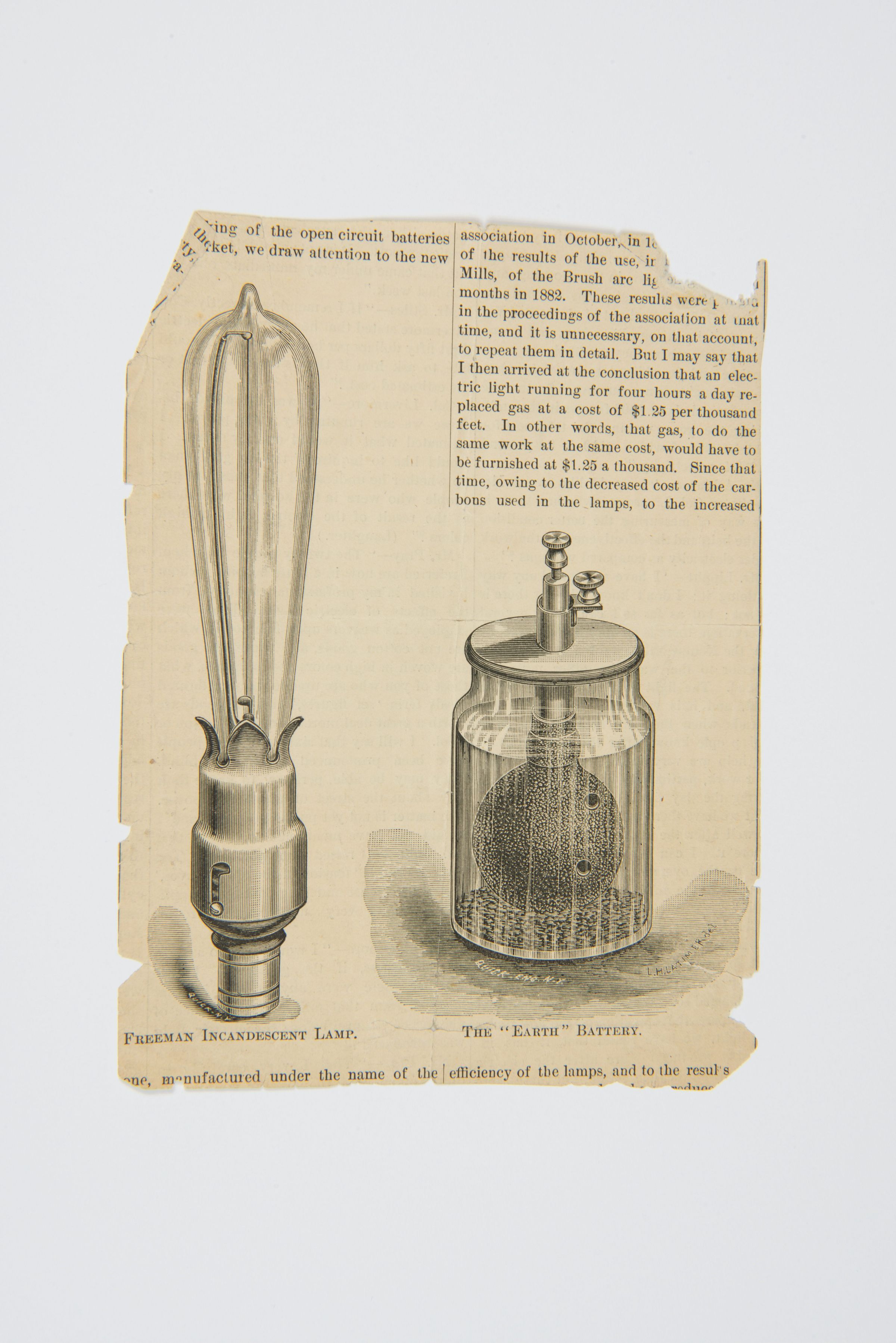Freeman Incandescent Lamp and 'Earth' Battery – Newspaper Clipping

This clipping appears to be from a late 19th-century publication discussing advancements in electric lighting and energy sources. The Freeman Incandescent Lamp was part of the evolution of electric light bulbs, following innovations by Thomas Edison and Lewis Latimer in improving carbon filament longevity. The Earth Battery was an experimental electrochemical energy source, potentially used in low-power applications before more reliable batteries were developed. This article highlights contemporary discussions on the cost-effectiveness of electric lighting, emphasizing how decreasing carbon filament prices and efficiency improvements made electricity more competitive than gas lighting.
Latimer Family Papers (1870-1996 ) [QPL Full Collection]
Illustration Captions: "Freeman Incandescent Lamp." "The 'Earth' Battery." Partial Transcribed Text: "…association in October, in [illegible] of the results of the use, in [illegible] Mills, of the Brush arc li[ght] months in 1882. These results were p[resented] in the proceedings of the association at that time, and it is unnecessary, on that account, to repeat them in detail. But I may say that I then arrived at the conclusion that an electric light running for four hours a day replaced gas at a cost of $1.25 per thousand feet. In other words, that gas, to do the same work at the same cost, would have to be furnished at $1.25 a thousand. Since that time, owing to the decreased cost of the carbons used in the lamps, and to the increased…"